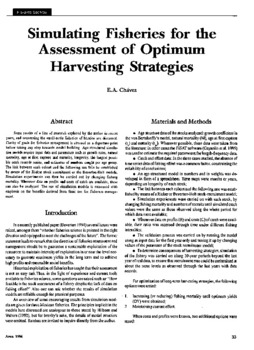Simulating fisheries for the assessment of optimum harvesting strategies

Citation
Chavez, E.A. (1996). Simulating fisheries for the assessment of optimum harvesting strategies. NAGA 19 (2): 33-35
Some results of a line of research explored by the author in recent years, and concerning the small-scale fisheries of Mexico are discussed. Clarity of goals for fisheries management is stressed as a departure point before taking any step towards model building. Age-structured simulation models require input data and parameters such as growth rates, natural mortality, age at first capture and maturity, longevity, the longest possible catch records series, and estimates of numbers caught per age group. The link between each cohort and the following can then be established by means of the Ricker stock recruitment or the Beverton-Holt models. Simulation experiments can then be carried out by changing fishing mortality. Whenever data on profits and costs and catch are available, these can also be analyzed. The use of simulation models is examined with emphasis on the benefits derived from their use for fisheries management.
Permalink
Date Available
Type
Publisher
Countries
Copyright
CC BY 4.0
Research Themes
Topics
Language